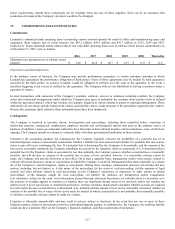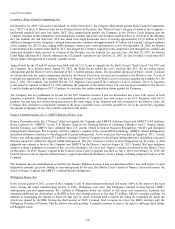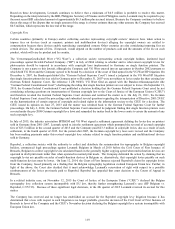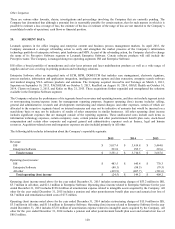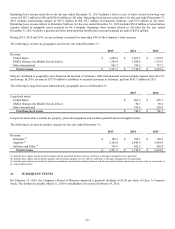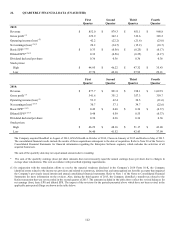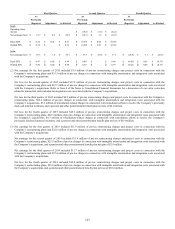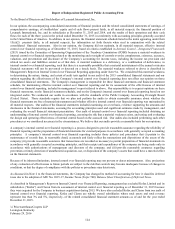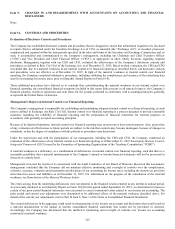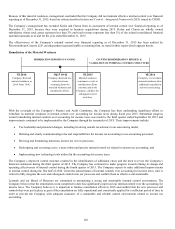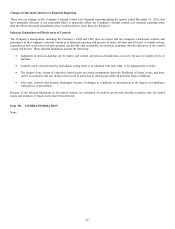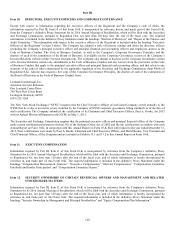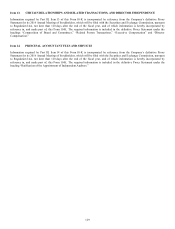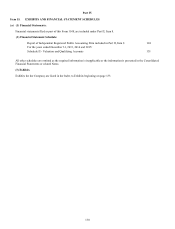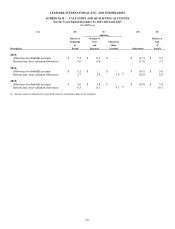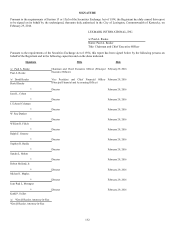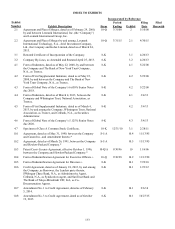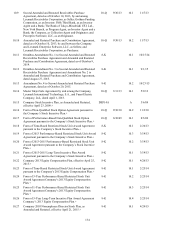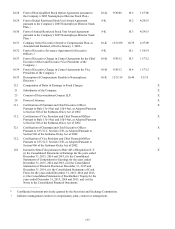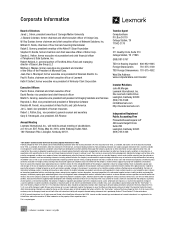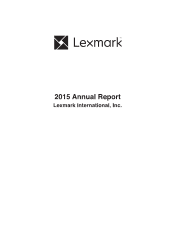Lexmark 2015 Annual Report Download - page 131
Download and view the complete annual report
Please find page 131 of the 2015 Lexmark annual report below. You can navigate through the pages in the report by either clicking on the pages listed below, or by using the keyword search tool below to find specific information within the annual report.127
Changes in Internal Control over Financial Reporting
There were no changes in the Company’s internal control over financial reporting during the quarter ended December 31, 2015, that
have materially affected, or are reasonably likely to materially affect, the Company’s internal control over financial reporting other
than the efforts discussed immediately above in Remediation of the Material Weakness.
Inherent Limitations on Effectiveness of Controls
The Company’s management, including the Company’s CEO and CFO, does not expect that the Company’s disclosure controls and
procedures or the Company’s internal control over financial reporting will prevent or detect all error and all fraud. A control system,
regardless of how well conceived and operated, can provide only reasonable, not absolute, assurance that the objectives of the control
system will be met. These inherent limitations include the following:
Judgments in decision-making can be faulty, and control and process breakdowns can occur because of simple errors or
mistakes.
Controls can be circumvented by individuals, acting alone or in collusion with each other, or by management override.
The design of any system of controls is based in part on certain assumptions about the likelihood of future events, and there
can be no assurance that any design will succeed in achieving its stated goals under all potential future conditions.
Over time, controls may become inadequate because of changes in conditions or deterioration in the degree of compliance
with policies or procedures.
Because of the inherent limitations in all control systems, no evaluation of controls can provide absolute assurance that all control
issues and instances of fraud, if any, have been detected.
Item 9B. OTHER INFORMATION
None


